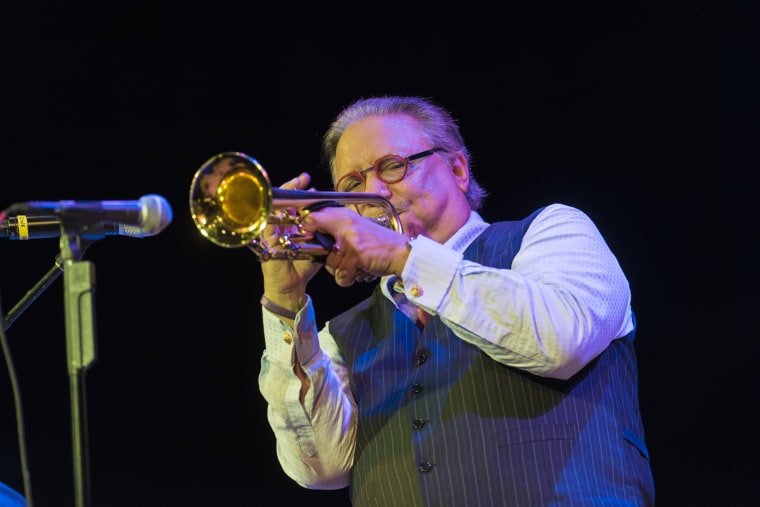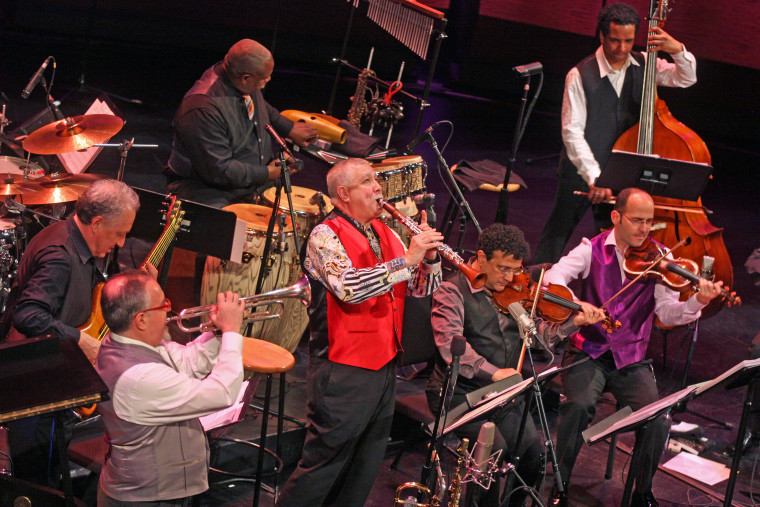MIAMI — Who would have thought the fusion of musical elements from Africa, Europe and the U.S. in the early 20th century would eventually produce the intricate sounds of what is known as Latin Jazz today?
A documentary released Wednesday by the Institute for Cuban and Cuban American Studies (ICCAS) at the University of Miami details how this marriage morphed into the music style that has become popular around the world.
Jaime Suchlicki, director of ICCAS and executive producer of the 31-minute documentary called “Jazz Latino,” said he came up with the idea “because nothing has been done about Latin Jazz.”
The documentary's producer and director, Jorge Sotolongo, said “this documentary is part of my life,” describing how he studied at the “Escuela Nacional de Arte” in Cuba alongside great musicians such as Paquito D’Rivera and Arturo Sandoval.
At the beginning of the documentary, Raul Murciano, associate dean and professor at the University of Miami Frost School of Music, explains how Latin Jazz can be traced back to the English country dance. The English version of the country dance was popular throughout Europe in the 1700s. The French who called it, contradanse, imported the music to Haiti when they colonized the Caribbean island.
When the Haitians revolted against the French in the late 1700s, those fleeing the violence migrated to the eastern part of Cuba and so did the contradanse. In Cuba, it was called contradanza and with time, the rhythm was modified.
“It had a very particular, identifiable beat,” Muricano told NBC News, talking about the contradanza.

The altered contradanza was eventually exported back to Spain where the new style took people by surprise and it was labeled the “Habanera.” It became very popular in the 19th century as short pieces with a classical style of writing. This generation of contradanza had a more romantic style.
“Every measure was stretched out a little. It became a more romantic piece,” according to Muricano.
The rhythmic arrangement of the contradanza blended well with another branch of Cuban music with African roots, which is the clave rhythm.
RELATED: Ah, Beep Beep! Rediscovering the Wonderful Sounds of Latin Boogaloo
“Now they were able to play a clave beat on top of the romantic style and this became known as the ‘danza,’” Murciano said. This was also the beginning of son, which relies heavily on improvisation.
During the late 19th century, there was a lot of communication between Cuba and the U.S., where a similar convergence of sounds was taking place with blues and ragtime in New Orleans.
During the documentary, Sotolongo interviews filmmaker and music producer Nat Chediak who authored the book “Diccionario de Jazz Latino” or “Dictionary of Latin Jazz.” Chediak describes one of the most pivotal moments in Latin Jazz which came in the 1940s. Cuban percussionist Chano Pozo traveled to New York and met legendary jazz trumpeter Dizzy Gillespie. Pozo became the first Latin percussionist in Gillespie’s band and together they wrote the first jazz composition with a Latin flavor.
The film includes an old black and white interview with Gillespie where he describes his encounter with Pozo. “Up to that time in 1947 there hadn’t been any, any Cuban influences in our music too much,” Gillespie said.
In another interview Gillespie recounts how he and Pozo together wrote the famous composition called “Manteca” that was based on the clave beat. Manteca, which means lard, was also a slang term for marijuana.
“It was similar to a nuclear weapon when it burst on the scene,” Gillespie said in the same interview referring to “Manteca.” “They had never seen a marriage of Cuban music and American music like that before.”
“Manteca” was the underpinning for Latin Jazz.
The latter part of the documentary goes through some of the influential musicians that have helped shape what is Latin Jazz today. The group “Grupo Cubano de Musica Moderna” also known as “Los Amigos” formed in 1958 and left classic pieces of Cuban Jazz like “Gandinga, Mondongo, Sondongo.”
Chediak described the Modern Jazz Quartet in the U.S., "Los Amigos in Cuba" and the "Zimbo Trio" in Brazil as the “Santísima Trinidad” or “holy trinity” at the time.
Other famous musicians who were interviewed for the documentary include Uruguayan violinist Federico Britos, saxophonist Ed Calle who was born in Venezuela and grew up in Spain, and acclaimed Cuban saxophonist Paquito D’Rivera who has won 14 Grammy awards.

D’Rivera described the hardships of playing Latin Jazz in Cuba in the early 1960s when American music was outlawed. Despite the trying time for Jazz, it flourished and the group Irakere was formed in 1973, which brought Latin Jazz to new heights.
Latin Jazz continues to evolve as musicians from different countries draw influences from their cultures. For Sotolongo, this documentary is just a short synopsis of how it all began.
“Latin Jazz cannot be summed up in half an hour. This is a summary of how it started. Latin Jazz should be a series — Brazilian Jazz alone deserves a series,” Sotolongo said.
